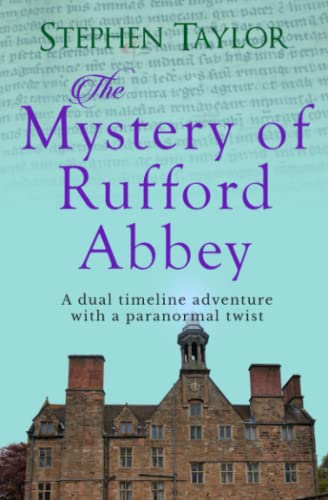The Mystery of Rufford Abbey
Most of this psychological thriller takes place in modern-day Nottinghamshire amid abductions of women. The novel follows a team of police detectives as they try to solve the most recent disappearance, but they have few leads. There’s no ransom demand, no body, and no crime scene. Gradually, the police use contemporary tools like CCTV to make progress, but this clever criminal covers his tracks at key moments.
Interspersed with this modern crime is a medieval tale of a young woman who goes berry picking and instead accidentally time travels. Beside a modern highway, she observes a man and woman doing things that she is ill-equipped to interpret. A monk chronicles her story. Those chronicles are uncovered in an English Heritage property and handed off to a medievalist to translate. The reader recognizes that what this medieval woman saw is relevant to the unfolding police case. The historian is as reluctant as the police to believe in a time-traveling medieval witness, but women’s lives are at stake and the only solid clues are coming from someone who’s been dead for 900 years. This premise makes for some twisty excitement.
The spareness of detail in most of the portions set within the medieval period feels acceptably suitable since they are presented as passages from the historian’s translation of the chronicles, and thus reflect that direct, brief style. Repetitions of lengthy and somewhat heavy-handed psychological analysis occasionally slow the modern crime sections of the novel. Ironically, the details of the modern villain’s florid criminal actions at times strain believability, while the time-travel is persuasively handled. For readers who like both modern crime thrillers and historical stories, this provides a good combination.










